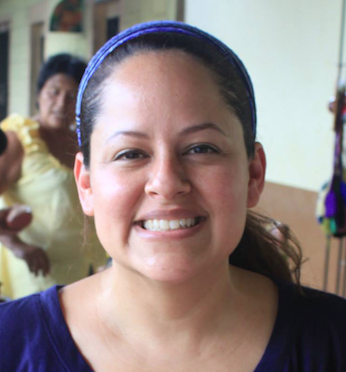CARLOS A. PINEDA: A Salvadoran Ballet Dancer with the 1930s San Francisco Ballet Company
- Claudia A Portillo

- May 14, 2021
- 5 min read
Updated: Apr 10
Carlos Antonio Pineda was born May 8, 1907 in Sonsonate, El Salvador to Pedro Pablo Pineda and Maria del Carmen Gutierrez. He was the youngest of seven children, and one of the first to board a ship destined for San Francisco in 1923, becoming the first Salvadoran ballet dancer to join the San Francisco Ballet Company as a Corps de Ballet member between 1932 – 1939.
At the age of 10 in 1917, a young Carlos is met with two catastrophic events in his hometown—a destructive earthquake, and the death of his father in Usulután. The tragic death of his father, a bookkeeper, marks the beginning of his family’s move to the bay area.
Carlos sails to San Francisco with two older sisters and other family members declaring their intentions to permanently stay in the U.S. in 1923. But only Carlos and his sister Isabel stay in the bustling city that was in the middle of a restoration after the war and a pandemic.
Pineda is able to finish high school during a time in San Francisco's history when segregation in schools was accepted. At 18 years old, he lives in downtown at 1008 Larkin Street, also known as the Tenderloin district, and works as an electrician for a San Francisco elevator company before becoming a professional dancer, and later a film actor.
In the 1920s, despite prohibition, the entertainment industry of San Francisco remained popular. San Francisco was a hub for all kinds entertainment from dark speakeasy rooms to the bright lights of movie productions.
The San Francisco Opera was also growing in popularity. Since 1923, its audience, supporters, and artists consistently increased thanks to Maestro Gaetano Merola’s management and vision. Overtime, Merola incorporated a Corps de Ballet to play a peripheral role for the growing opera enthusiasts, many of which were students of local dance studios.

Dance studios thrived in San Francisco. They provided well-trained dancers to the growing film industries and theater productions. Several Corps de Ballet dancers and choreographers had their own dance studios—George McKeller Pring of Irish and English roots had a dance studio on 420 Sutter Street, and was a former student of Russian Ballet dancer Theodore Kosloff. Estelle Reed, considered by some a pioneer of modern dance, opened hers on 466 Geary Street, and Spanish-ballet dancer, Guillermo del Oro had a studio on 1362 Post Street in 1927.
The Corps de Ballet members came from all around the world; and some choreographer's saw this as an asset and incorporated ethnic dance moves to enhance performances. This behavior, however, did not translate outside of the arts. Racial discrimination was rampant and a part of everyday life. Ballet and folkloric Mexican dancer and Corps member, Maclovia Ruiz recounts her San Francisco high school traumas that led her father’s decision to pull her out of school and put her in a ballet studio where he was assured everyone was welcomed.
Eventually, Pineda’s mother and older sister Carmen, and their brother Pablo all had moved to San Francisco by 1931. The move was timely because Carlos started performing with the Corps de Ballet in 1932—the same year the inauguration of the War Memorial Opera House took place. This was a significant milestone for the Opera considering its audience and donors had grown exponentially, allowing for the multi-million dollar construction of a permanent home during the Depression.
At that time, the Corps de Ballet is under the supervision of Miss Estelle Reed who, choreographed the ballet performances for the inauguration that would follow the season’s opener—Puccini’s Tosca. The season included Verdi’s Rigoletto and La Traviata, Gounod’s Faust, and several other extraordinary operas.
When Faust is in production, Maestro Merola announces Adolph Bolm as the new Ballet Master. Bolm was a renowned ballet dancer in Serge Diaghilev’s Ballets Russes. His modern dance techniques showed great mastery and vision, significantly growing the San Francisco Opera Ballet. Carlos continues under Bolm, sharing billing with ballet dancers like Nico Charisse (first husband of famed dancer Cyd Charisse), Dimitri Romanoff, Nikolay Vasilieff, Guillermo del Oro, and Maclovia Ruiz.
By 1934, Adolph Bolm had set the tone for his successors by transforming musical productions successfully into visual extravaganzas. Opera productions began fully incorporating the Corps de Ballet in highly acclaimed and lavish productions such as Bizet’s Carmen, Delibes’ Lakmé, and Gounod’s Faust.
After the departure of Bolm, Serge Oukrainsky returns and Carlos stays on with the Company from 1937 through 1939. During the off season, he joins Lee Caiati’s opera and ballet company to perform in Max Reinhardt’s production of Goethe’s Faust at the Civic Auditorium in San Francisco. And according to San Francisco Ballet Archivist, Supriya Wronkiewicz of the Museum of Performance + Dance, he also dances in William Christensen's “Roumanian (or Romanian) Wedding Festival,” and in La Boheme with Christensen as principal dancer.
Pineda revels in his own wedding festivities when he marries Mildred Julian in Los Angeles on September 30, 1939. She is a cashier at The Emporium department store, and the daughter of a Colombian mother and Belgian father.

Nearly a month later, the festivities start up again when Pineda finally becomes a U.S. citizen and calls on his old colleague and ballet dancer George Pring to serve as a witness. Carlos stays in Los Angeles living as a boarder and working as an actor for movie studios while Mildred returns to San Francisco.
In Los Angeles, he lives with many other actors, across the street from Immaculate Heart High School at 5518 Franklin Ave on the corner of Western Blvd near the entrance of Griffith Park. Pineda continues to work as an actor during the 1940s. However, bit-part players and even background dancers on major movie productions hardly ever received credit for the minor, but important roles they played. Pineda's niece, Francine Sosa-Lewis, shared on Faceboook images of Pineda as a dancer in a film called Down Argentine Way (1940). The film is considered "culturally, historically, or aesthetically significant" by the Library of Congress and preserved in the National Film Registry.
In Cobbett Steinberg’s book San Francisco Ballet: The First Fifty Years, a review by The New York Times’ on the ballet company's Fiftieth Anniversary held in 1983 poignantly described the Company’s successful trajectory.
It demonstrated that the Company has a distinguished past, that it has developed its own traditions and that it is carefully preparing for the future. In other words, for fifty years, the San Francisco Ballet has been doing something right.
Carlos Antonio Pineda was certainly doing something right for the arts, the city, and the community. For nearly a decade, as a member of the Corps de Ballet, Pineda helped set the stage for one of the city’s most significant cultural achievements—the foundation of the San Francisco Ballet Company. Pineda is the first Salvadoran-born ballet dancer with the Company.
By 1944, Pineda’s voter registration shows him living at 565 Fillmore in San Francisco, as an electrician. His last known address is in the quaint neighborhood of Bernal Heights on Precita Street in the Mission district. Pineda passed away in 1994 at the age of 87.
SOURCES:
Carlos Antonio Pineda, California, U.S., Federal Naturalization Records, 1843-1999; National Archives at San Francisco; San Bruno, California; NAI Number: 605504; Record Group Title: RG 21; Record Group Number: Records of District Courts of the United States, 1685-2009, image 1761, Ancestry.com (November 2, 2020)
Obituary of maclovia ruiz early american ballet star, who shone in opera and hollywood and was lauded as 'the greatest flamenco dancer'. (2006, Jan 19). The Daily Telegraph Retrieved from calstatela.edu/library
https://www.laconservancy.org/issues/sister-mary-corita-studio
Francine Sosa-Lewis. Facebook, Accessed June 30, 2021.














AWESOME!!!!